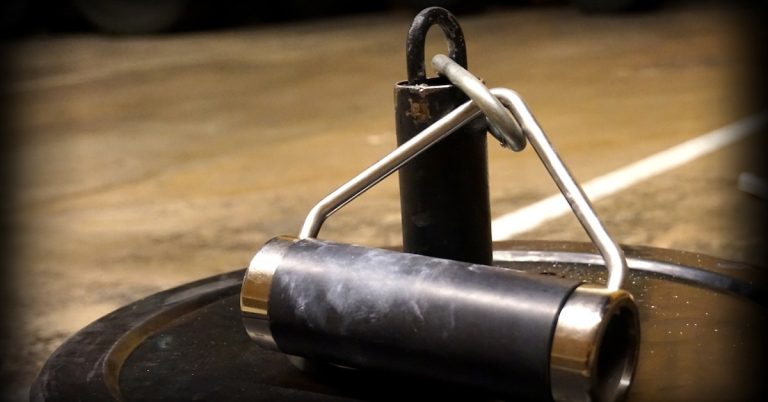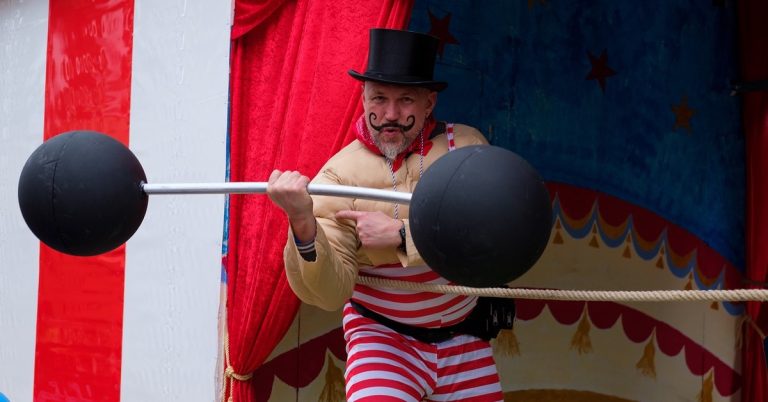The famous adage “If you fail to plan, you plan to fail!” applies to strength training as it does to just about any other endeavor. Arriving at the gym with no plan will lead to haphazard results. Tudor Bompa, considered by many as the father of periodization, puts it this way: “In training, nothing happens by accident, but rather by design. Do you want to be successful? Plan for it!”
Periodization is simply a way to organize or plan training into phases. Every lifter should map out their training to a certain extent, but you need to be careful about planning too far in advance because things may change. All it takes is one injury to disrupt your plans!
A typical periodized plan for athletes involves the following sequence of training:
Endurance → Hypertrophy → Strength → Power
However, as you move from one phase to the other, the attributes of the previous phase(s) begin to decay. A more efficient approach involves the conjugate method, which allows you to train multiple motor qualities at one time.
Al Vermeil is a proponent of the conjugate method. He’s also the only strength and conditioning coach to have world championship rings from both the NFL and the NBA, so when he talks you should listen!
Vermeil believes that all motor qualities should be trained simultaneously, only the volume and intensity of each will vary depending on the needs of the athlete. When one component or method is being emphasized, the others must be reduced but never eliminated.
Periodization Between Programs
In general, three methods of periodization exist: standard, linear, and alternating. To improve strength over several weeks, research indicates that linear periodization is superior to standard periodization, and alternating periodization is superior to linear periodization.

The standard method of periodization is appropriate for beginners during the initial stages of training since greater emphasis should be placed on form and technique over any other variable. Most individuals, however, will experience excellent progress with the linear method of periodization, and even greater success can be achieved with the alternating method. The dashed lines in the figures above reflect the rate of progress – the steepest slope and thus the greatest rate of progress occurs in the last method.
Although research shows an improvement in strength with daily, weekly, and biweekly undulating periodization models, recent evidence from Germany suggests a longer period for significant morphological adaptations to occur when rotating between hypertrophy and strength/power phases. Individual rate of adaptation will ultimately determine the duration of each program, but on average a four-week period for most individuals works well (see page 104 of The Elite Trainer for more information).
Periodization Within Programs
I’ve combined undulatory loading with a conjugate approach of training to come up with the following models for maximum strength, hypertrophy, and muscular endurance. Power is also promoted in these models since the intent of all concentric actions is performed in an eXplosive manner.
Maximum Strength (A Exercises)
| Month | 1 | 2 | 3 | 4 |
| Sets | 4-6 | 4-6 | 4-6 | 4-6 |
| Reps | 4-6 | 2-4 | 3-5 | 1-3 |
| Tempo | 50X0 | 50X0 | 50X0 | 50X0 |
| Rest Interval | 180s | 180s | 180s | 180s |
Hypertrophy (B Exercises)
| Month | 1 | 2 | 3 | 4 |
| Sets | 3-4 | 3-4 | 3-4 | 3-4 |
| Reps | 10-12 | 6-8 | 8-10 | 4-6 |
| Tempo | 30X0 | 30X0 | 30X0 | 30X0 |
| Rest Interval | 90s | 90s | 90s | 90s |
Muscular Endurance (C Exercises)
| Month | 1 | 2 | 3 | 4 |
| Sets | 2-3 | 2-3 | 2-3 | 2-3 |
| Reps | 20-25 | 12-15 | 15-20 | 10-12 |
| Tempo | 10X0 | 10X0 | 10X0 | 10X0 |
| Rest Interval | 30s | 30s | 30s | 30s |
Each training session consists of three pairs (A, B, C) of exercises using the parameters outlined above. Depending on the training status and availability of the athlete, a two-day or three-day split may be used as outlined below.
Two-Day Split
| Day 1 – Upper Body | Day 2 – Lower Body |
| A1) Lying, Seated or Standing Press A2) Chin-Up, Pull-Up or Row B1) Elbow Flexion B2) Elbow Extension C1) Wrist Flexion C2) Wrist Extension | A1) Squat or Deadlift A2) Knee Flexion B1) Split Squat or Step-Up B2) Hip/Trunk Extension C1) Hip/Trunk Flexion C2) Ankle Flexion/Extension |
Three-Day Split
| Day 1 – Upper Body | Day 2 – Lower Body | Day 3 – Upper Body |
| A1) Seated or Standing Press A2) Chin-Up or Pull-Up B1) Elbow Flexion B2) Elbow Extension C1) Wrist Flexion C2) Wrist Extension | A1) Squat or Deadlift A2) Knee Flexion B1) Split Squat or Step-Up B2) Hip/Trunk Extension C1) Hip/Trunk Flexion C2) Ankle Flexion/Extension | A1) Lying Press A2) Seated, Bent-Over or One-Arm Row B1) Elbow Flexion B2) Elbow Extension C1) Wrist Flexion C2) Wrist Extension |
You have a considerable number of exercise options at your disposal with this plan. Here’s an example of what a two-day split would like over four months using the alternating conjugate system.
Month 1
Day 1 – Upper Body
A1) One-Arm Dumbbell Press: 4-6 x 4-6 @ 50X0, 180s
A2) Close-Neutral-Grip Chin-Up: 4-6 x 4-6 @ 50X0, 180s
B1) Seated Zottman Curl: 3-4 x 10-12 @ 30X0, 90s
B2) Flat EZ-Bar Triceps Extension: 3-4 x 10-12 @ 30X0, 90s
C1) Seated Cable Wrist Curl: 2-3 x 20-25 @ 10X0, 30s
C2) Seated Reverse-Grip Cable Wrist Curl: 2-3 x 20-25 @ 10X0, 30s
Day 2 – Lower Body
A1) Back Squat: 4-6 x 4-6 @ 50X0, 180s
A2) Lying Leg Curl: 4-6 x 4-6 @ 50X0, 180s
B1) Cable Split Squat: 3-4 x 10-12 @ 30X0, 90s
B2) Semi-Stiff-Leg Barbell Deadlift: 3-4 x 10-12 @ 30X0, 90s
C1) Supine Cable Knee-In: 2-3 x 20-25 @ 10X0, 30s
C2) Seated Calf Raise: 2-3 x 20-25 @ 10X0, 30s
Month 2
Day 1 – Upper Body
A1) Flat Barbell Press: 4-6 x 2-4 @ 50X0, 180s
A2) Sternum Chin-Up: 4-6 x 2-4 @ 50X0, 180s
B1) Incline Hammer Curl: 3-4 x 6-8 @ 30X0, 90s
B2) Parallel-Bar Dip: 3-4 x 6-8 @ 30X0, 90s
C1) Seated Dumbbell Wrist Curl: 2-3 x 12-15 @ 10X0, 30s
C2) Seated Reverse-Grip Dumbbell Wrist Curl: 2-3 x 12-15 @ 10X0, 30s
Day 2 – Lower Body
A1) Bent-Knee Deadlift: 4-6 x 2-4 @ 50X0, 180s
A2) Standing Leg Curl: 4-6 x 2-4 @ 50X0, 180s
B1) Back Step-Up: 3-4 x 6-8 @ 30X0, 90s
B2) Reverse Hyperextension: 3-4 x 6-8 @ 30X0, 90s
C1) Decline Sit-Up: 2-3 x 12-15 @ 10X0, 30s
C2) Standing Calf Raise: 2-3 x 12-15 @ 10X0, 30s
Month 3
Day 1 – Upper Body
A1) Incline Barbell Press: 4-6 x 3-5 @ 50X0, 180s
A2) Mixed-Grip Chin-Up: 4-6 x 3-5 @ 50X0, 180s
B1) Standing Reverse-Grip EZ-Bar Curl: 3-4 x 8-10 @ 30X0, 90s
B2) Tiger Bend Push-Up: 3-4 x 8-10 @ 30X0, 90s
C1) Standing Radial Deviation: 2-3 x 15-20 @ 10X0, 30s
C2) Standing Ulnar Deviation: 2-3 x 15-20 @ 10X0, 30s
Day 2 – Lower Body
A1) Front Squat: 4-6 x 3-5 @ 50X0, 180s
A2) Seated Leg Curl: 4-6 x 3-5 @ 50X0, 180s
B1) Rear-Foot-Elevated Dumbbell Split Squat: 3-4 x 8-10 @ 30X0, 90s
B2) Standing Good Morning: 3-4 x 8-10 @ 30X0, 90s
C1) Hanging Leg Raise: 2-3 x 15-20 @ 10X0, 30s
C2) Seated Cable Tibialis Raise: 2-3 x 15-20 @ 10X0, 30s
Month 4
Day 1 – Upper Body
A1) Standing Barbell Press: 4-6 x 1-3 @ 50X0, 180s
A2) Mid-Grip Pull-Up: 4-6 x 1-3 @ 50X0, 180s
B1) Seated One-Arm Preacher Dumbbell Curl: 3-4 x 4-6 @ 30X0, 90s
B2) Decline Close-Grip Barbell Press: 3-4 x 4-6 @ 30X0, 90s
C1) Seated Barbell Wrist Curl: 2-3 x 10-12 @ 10X0, 30s
C2) Seated Reverse-Grip EZ-Bar Wrist Curl: 2-3 x 10-12 @ 10X0, 30s
Day 2 – Lower Body
A1) Snatch-Grip Deficit Deadlift: 4-6 x 1-3 @ 50X0, 180s
A2) Lying Negative-Accentuated Leg Curl: 4-6 x 1-3 @ 50X0, 180s
B1) Front Step-Up: 3-4 x 4-6 @ 30X0, 90s
B2) Glute-Ham Raise: 3-4 x 4-6 @ 30X0, 90s
C1) Cable Woodchop: 2-3 x 10-12 @ 10X0, 30s
C2) Barbell Jump: 2-3 x 10-12 @ 10X0, 30s
Of course, numerous modifications can be made depending on the individual and the situation. For example, if the athlete requires more scapular stabilization and rotator cuff work, I’ll substitute those movements for wrist flexion and extension. Just use the models above as a template and use your judgment to make any necessary changes.
Double/Triple Split System
If you can barely squeeze in three or four workouts a week, do not read any further. Just do what’s outlined above and don’t upset your wife any more than you already do. For full-time athletes, students on summer break, locked-out government workers, and those that don’t mind occasional family disputes, consider a double split or even a triple split system for maximum results. Breaking up the training over two sessions (A exercises in the morning, B and C exercises at night) or three sessions (A exercises in the morning, B exercises in the afternoon, and C exercises in the evening) will produce better results, and catching a nap between those sessions produces the best results!
Don’t think for a second that this plan is limited to only athletes of “non-subjective” sports. Physique competitors and anyone else who wants to look “swole” would also benefit from this approach. One knock against bodybuilders is that they rarely venture into the low-rep range, but doing so in a structured manner will help to break out of a training rut and boost strength. By incorporating low, moderate, and high rep training, you activate a wide spectrum of muscle fibers (slow-twitch type I and fast-twitch type IIA and IIB) for maximum growth.
Take advantage of all the positive effects that periodization has to offer. Use linear loading within programs and alternating loading between programs, and make sure to use a conjugate method of training various motor qualities in your workouts.

The Elite Trainer: Strength Training for the Serious Professional
The Elite Trainer is a synthesis of the very latest thinking in strength training and a comprehensive guide to developing individualized programs for your clients. Intensity, volume, density, repetitions, sets, tempo, time under tension, rest interval, exercise selection and sequence, load selection, duration, and frequency are all covered in detail in easy-to-understand language. Whether you are a seasoned professional or a beginner, The Elite Trainer provides a wealth of information you can put to use immediately.

The Periodization Blueprint for Chin-Ups and Pull-Ups
Exciting news! Just got my hands on Swissies45, and they’ve transformed my chin-up game. No more draping an EZ-Curl bar

Unleash Your Grip Strength: Elevate Your Performance with IronMind Implements
Are you ready to take your grip strength to the next level? Look no further than IronMind implements. These versatile

The 3/7 Method for Size and Strength
A new strength training protocol has surfaced that will help you maximize strength gains with less training time and effort.
follow
Error: No feed with the ID 2 found.
Please go to the Instagram Feed settings page to create a feed.
